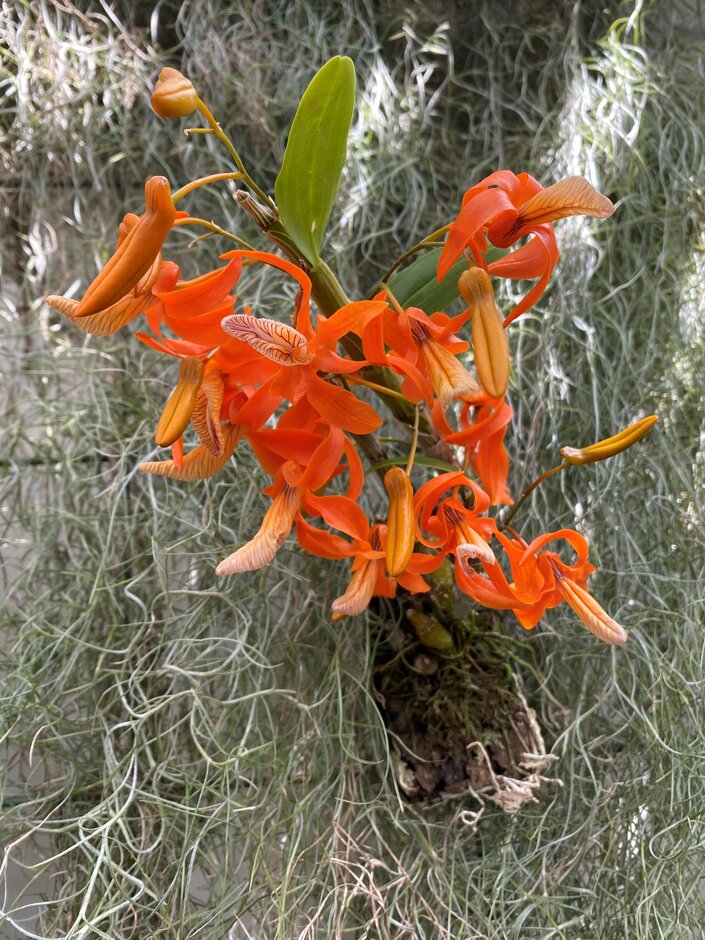Dendrobium unicum
A miniature-sized, tropical orchid with clustered, 7-9cm long stems. Two to three, lance-shaped leaves 2-7cm long are carried near the tip of each stem. Short flowering stems emerge from upper nodes of leafed or leafless stems and carry two to four, bright orange-red flowers. Each upside-down flower measures 4-5cm. The lip is paler, with dark maroon, veined pattern.

Size
Ultimate height
Up to 10cmTime to ultimate height
5–10 yearsUltimate spread
0–0.1 metreGrowing conditions
Moisture
Well–drainedpH
NeutralColour & scent
| Stem | Flower | Foliage | Fruit | |
| Spring | Orange Red | Green | ||
|---|---|---|---|---|
| Summer | Orange Red | Green | ||
| Autumn | Green | |||
| Winter |
Position
- Full sun
- Partial shade
Aspect
East–facing or North–facing or South–facing or West–facing
Exposure
Sheltered Hardiness
H1BBotanical details
- Family
- Orchidaceae
- Native to GB / Ireland
- No
- Foliage
- Deciduous or Semi evergreen
- Habit
- Clump forming
- Genus
Dendrobium are epiphytic and terrestrial orchids with elongated, stem-like pseudobulbs bearing linear to ovate leaves. Racemes or panicles of showy flowers are produced from nodes along the stems mainly in spring
- Name status
Correct
- Plant range
- S. E. Asia
How to grow
Cultivation
Plants are best grown mounted on cork bark or wood if sufficient humidity can be provided. Alternatively, grow in a basket in an epiphytic, medium grade, bark-based potting mix with added perlite, moss, or coir. As with many orchids, they grow best when the roots are slightly restricted. Therefore, avoid over-potting or frequent root disturbance. Provide bright light and sufficient humidity by misting regularly throughout the growing season. Reduce watering and feeding during the rest period in winter. For a successfull cultivation, the plant requires good air movement, and a significant drop of temperature between day and night time. See indoor orchid cultivation
Propagation
Propagation by seed is only possible in controlled laboratory environment. Mature plants may be divided when the plant overgrows the pot. Sideshoots (keiki) may develop on older canes - remove and pot them into sphagnum moss when the new roots are at least 2cm long.
Suggested planting locations and garden types
- Houseplants
- Conservatory and greenhouse
Pruning
No pruning required. Remove spent flowers as necessary, but do not cut the whole cane unless completely shrivelled. Oldest canes may be removed as long as there are enough, younger, thick, leaf-bearing canes on the plant.
Pests
May be susceptible to scale insects, aphids, mealybugs and red spider mite.
Diseases
Generally disease-free.
Love gardening
Sign up to receive regular gardening tips, inspiration, offers and more
View our Privacy Policy
Get involved
The Royal Horticultural Society is the UK’s leading gardening charity. We aim to enrich everyone’s life through plants, and make the UK a greener and more beautiful place.